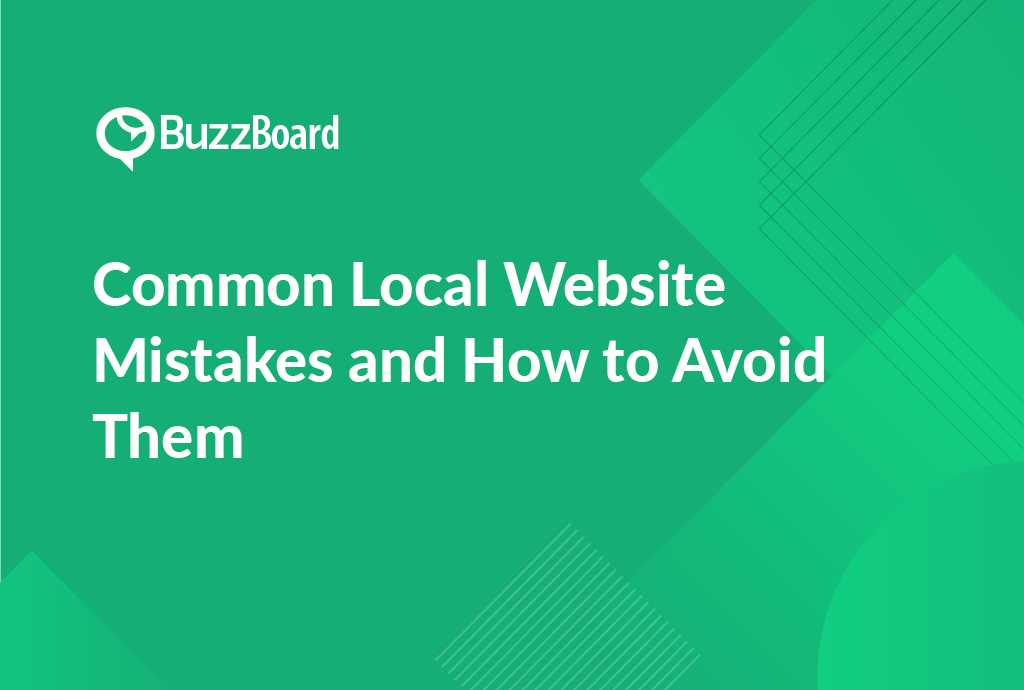Understanding the Common Mistakes Made in Local Website Design
Understanding common errors in local website design is essential for any digital marketing sales personnel. This knowledge can help avoid pitfalls and devise a more efficient local website strategy for small and local businesses.
One glaring mistake is the failure to optimize for local SEO. This goes beyond merely adding geographically-specific keywords into your content. Instead, it requires making sure your website’s metadata, schema markup, and on-page SEO practices align with your local business marketing goals. Neglecting this can lead to missed opportunities to effectively draw a local audience.
Another frequent error is ignoring mobile optimization. Given the substantial percentage of web traffic from mobile devices, a non-mobile-friendly website design can deter a considerable segment of potential customers. Ensuring your website is responsive to different device sizes distinctly impacts usability, engagement, and ultimately, conversions.
Lastly, failing to include clear, compelling calls to action (CTAs) can hinder engagement with visitors and their transformation into potential leads. Proper placement of CTAs can steer your visitors along a well-defined path towards conversion, playing a crucial role in your local website design and strategy.
In conclusion, recognizing and avoiding these common mistakes can significantly boost the effectiveness of any local website strategy.
The Impact of Local Website Mistakes on Local Business Marketing
In the digital marketing landscape, the significance of a robust local website strategy for small and local businesses cannot be underestimated. Any errors in creating or managing a local website can greatly affect local business marketing efforts.
One prevalent mistake in local website design is the failure to optimize the site for local search. Google utilizes different algorithms for local search queries – a detail that requires unique optimization strategies from marketers. When local businesses fall short in this respect, they gamble with their brand’s visibility and the potential consumer reach in their specific locality.
Another common error involves inadequate mobile optimization. Considering that nearly 50% of global website traffic is driven by mobile devices, a non-responsive local website can significantly dissuade potential customers, negatively impacting the business.
Another oversight is disregarding site speed. Prospective customers anticipate fast-loading sites; extended loading periods can elevate bounce rates, damaging your website’s credibility with search engines, and consequently, potential customers.
To avoid local website mistakes, it’s crucial to recognize them and comprehend their potential effects on local business marketing. This highlights the importance of effective web design strategy and execution for local businesses. As salespeople at digital marketing agencies catering to these small and local businesses, you have a unique opportunity to steer your clients away from these expensive errors towards strong, efficient local websites.
Proven Strategies to Avoid Common Local Website Mistakes
Building a local website demands strategic planning. It operates much like a physical storefront, presenting your brand, products, and services to prospective customers. However, common missteps in creating a local website can undermine your local business marketing endeavors. Here are some tactics to dodge these pitfalls when formulating your local website design strategy.
Firstly, prioritize usability over complexity. Users gravitate towards a neat, easily navigable site. Overloaded pages, elusive contact information or excessive loading time can deter visitors. Although the appeal of aesthetics is potent, it’s more crucial to prioritize your customers’ user experience.
Another significant misjudgment in local website development is misunderstanding your local audience. Thorough understanding of your audience demographics, predilections, and behaviors is invaluable. Perfect your content, design, layout, and keywords to target your specific audience.
Finally, a robust SEO strategy is pivotal for your local website’s success. Pinpoint the appropriate local keywords, employ pertinent meta-tags, and guarantee your website is optimized for mobile. Overlooking the influence of SEO might obstruct your website from connecting with potential customers.
Keeping these strategies in mind while outlining your local website plan will help you sidestep common blunders, making certain that you deliver an efficient local business marketing tool.
Examples of Successful Local Website Strategy Implementations
Implementing a vigorous local website strategy is a productive way to increase awareness and brand credibility in a targeted market for small and local businesses. Today, we spotlight some triumphant examples to enhance your comprehension and hopefully ignite your own local website stratagems while sidestepping prevalent local website errors.
Take for instance, a local organic grocery store that launched a streamlined, well-designed website allowing online purchases. This local website design emphasized usability and convenience, two essential elements for its customer base. The outcome? Strengthened customer loyalty and an augmented online sales stream. Marketing their local business through a digital platform enabled the grocery store to uplift its local presence and propel its reputation.
In a different scenario, a small town diner distinguished itself by adding a ‘Meet the Team’ page on their website. This personalized method resonated with the local community, instigating increased footfall and generating positive online feedback. This stands as a prime example of a local website strategy offering a unique selling proposition to connect with prospective customers.
During the development of local website strategies, missteps can happen. Local website errors can range from technical issues such as slow load speed and complex-to-navigate pages, to content-related false steps like lack of localization or failure to optimize for SEO. As a salesperson, you possess the potential to guide clients to avoid these predicaments by painting a vivid image of successful local website strategy execution.
The Benefits and Challenges of Avoiding Mistakes in Local Website Design
In the digital era, a skillfully crafted website is not a luxury for local businesses, but a necessity. A superior local website design can be transformative, helping extend your reach to the local audience, enhancing your ranking in local searches and ultimately driving your overall business success. However, striking the right chord with local website design isn’t always simple and evading local website pitfalls is critical.
Avoiding blunders in local website design reaps multiple rewards. Chiefly, a top-notch, error-free website enhances user experience significantly. No one favors navigating a website teeming with hiccups and badly structured content. Further, a website devoid of design flaws fosters trust and reliability among local customers – crucial aspects that prompt them to interact with your business.
Contrarily, dodging local website errors has its own set of challenges. The most prominent is keeping up with ceaseless changes in website design trends and expectations. What succeeded last year might not hold true this year, and tracking these changes is complex. Plus, articulating the needs, preferences, and behavior of your local audience calls for continued research and analysis, which can be time intensive.
To surmount these obstacles, implementation of an effective local website strategy is crucial. Such a strategy should prioritize continuous testing, understanding of local SEO, and timely website design updates to align with evolving user expectations and technological advancements.
By steering clear of typical local website errors and implementing a holistic local website strategy, your local business can







